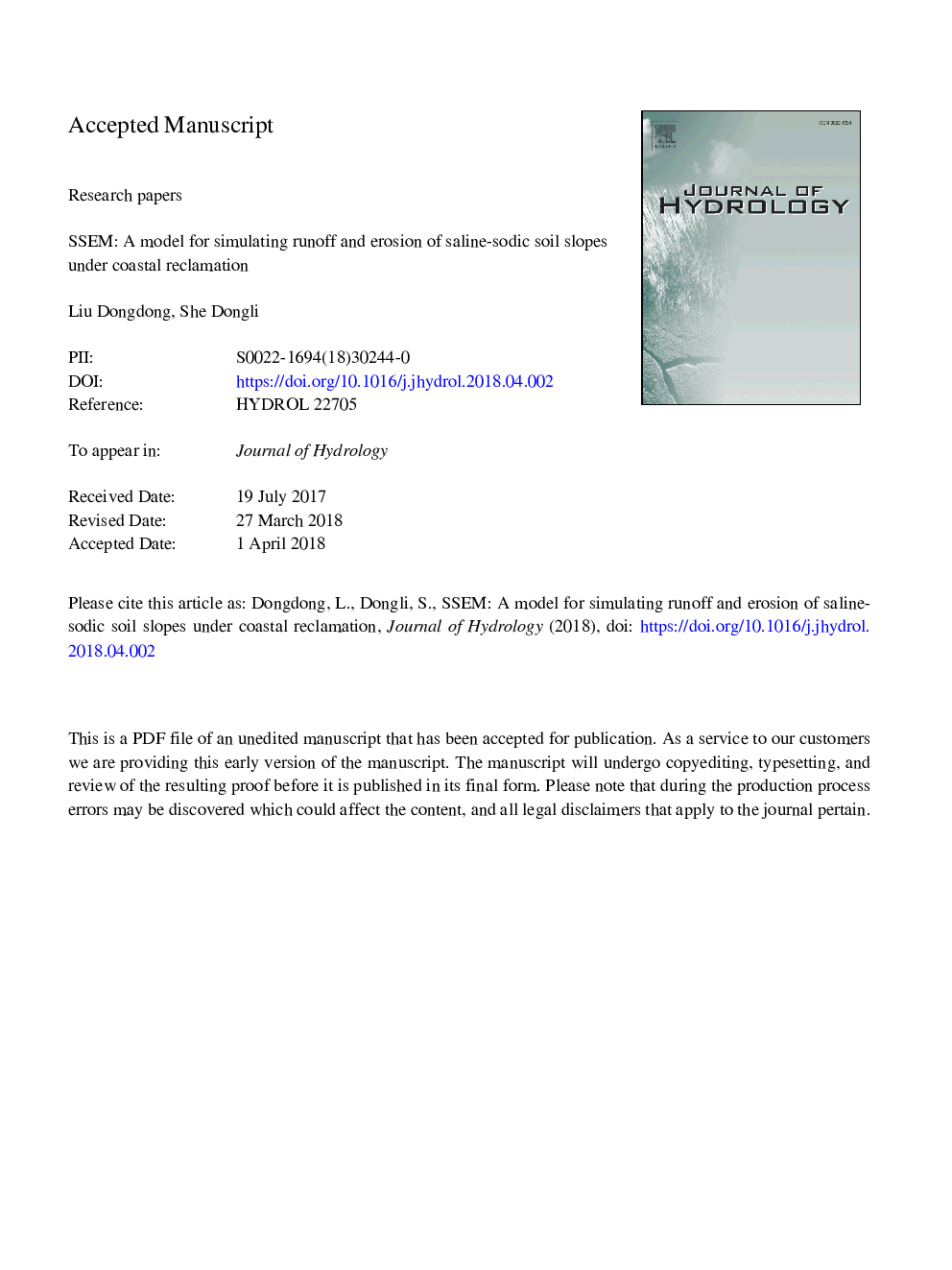| Article ID | Journal | Published Year | Pages | File Type |
|---|---|---|---|---|
| 8894901 | Journal of Hydrology | 2018 | 51 Pages |
Abstract
Current physically based erosion models do not carefully consider the dynamic variations of soil properties during rainfall and are unable to simulate saline-sodic soil slope erosion processes. The aim of this work was to build upon a complete model framework, SSEM, to simulate runoff and erosion processes for saline-sodic soils by coupling dynamic saturated hydraulic conductivity Ks and soil erodibility KÏ. Sixty rainfall simulation rainfall experiments (2 soil texturesâ¯Ãâ¯5 sodicity levelsâ¯Ãâ¯2 slope gradientsâ¯Ãâ¯3 duplicates) provided data for model calibration and validation. SSEM worked very well for simulating the runoff and erosion processes of saline-sodic silty clay. The runoff and erosion processes of saline-sodic silt loam were more complex than those of non-saline soils or soils with higher clay contents; thus, SSEM did not perform very well for some validation events. We further examined the model performances of four concepts: Dynamic Ks and KÏ (Case 1, SSEM), Dynamic Ks and Constant KÏ (Case 2), Constant Ks and Dynamic KÏ (Case 3) and Constant Ks and Constant KÏ (Case 4). The results demonstrated that the model, which considers dynamic variations in soil saturated hydraulic conductivity and soil erodibility, can provide more reasonable runoff and erosion prediction results for saline-sodic soils.
Related Topics
Physical Sciences and Engineering
Earth and Planetary Sciences
Earth-Surface Processes
Authors
Dongdong Liu, Dongli She,
